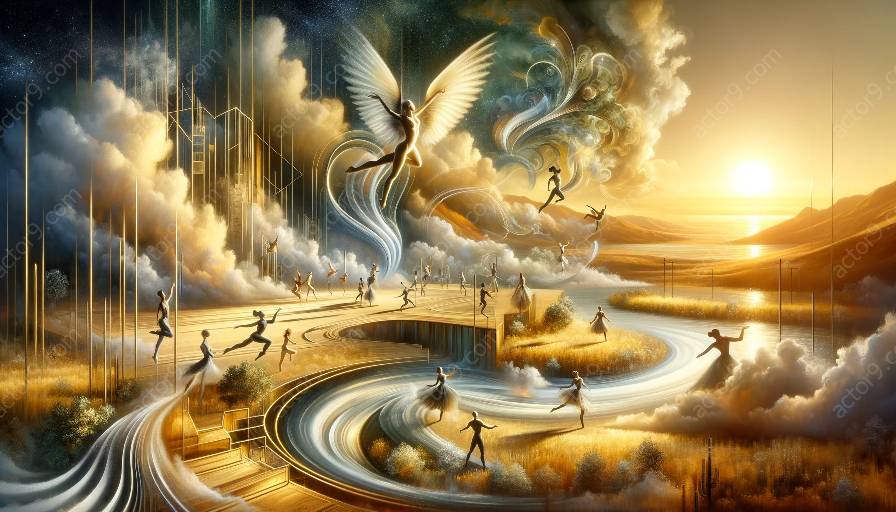When it comes to physical theatre and circus arts, the combination of surprise and tension plays a crucial role in captivating the audience. In this topic cluster, we will dive into the exciting world of physical theatre and circus arts, exploring their intersection and the elements that make them so compelling.
The Intersection of Physical Theatre and Circus Arts
Physical theatre and circus arts are two distinct forms of performance art that have a significant intersection. Both emphasize physicality, movement, and storytelling through non-verbal means, creating visually engaging and captivating experiences for audiences. The intersection of these two art forms often results in dynamic, awe-inspiring performances that push the boundaries of what is possible in live entertainment.
Elements of Surprise
Physical theatre and circus arts are known for their ability to surprise and astonish audiences through spectacular displays of athleticism and skill. One of the key elements of surprise in these performances is the unexpected nature of the physical feats and stunts. Whether it's an acrobat defying gravity with a breathtaking aerial routine or a physical theatre performer seamlessly transitioning between characters and emotions, the element of surprise keeps the audience on the edge of their seats, eager to see what will happen next.
Another aspect of surprise in physical theatre and circus arts is the use of unconventional props and staging. Performers often incorporate unexpected elements such as giant hoops, spinning wheels, or innovative set designs to create visually stunning and unexpected moments that captivate the audience. The element of surprise adds an element of thrill and excitement to the performances, leaving a lasting impression on the viewers.
Creating Tension
In addition to surprise, tension is a crucial element in physical theatre and circus arts. Tension can be conveyed through the physical movements and interactions of the performers, as well as through the use of lighting, sound, and music to create an atmosphere of anticipation and suspense. Whether it's a daring high-wire act, a dramatic fight sequence, or a silent, suspenseful moment of stillness, tension keeps the audience emotionally invested in the performance, evoking a range of emotions from excitement to fear and empathy.
Furthermore, the element of tension is often heightened by the risk-taking nature of physical theatre and circus arts. Performers push the boundaries of their physical abilities, willingly putting themselves in dangerous or challenging situations, creating an atmosphere of uncertainty and tension that keeps the audience fully engaged with the performance.
Impactful Storytelling
Surprise and tension in physical theatre and circus arts also contribute to impactful storytelling. Through the skillful integration of these elements, performers are able to convey complex narratives, themes, and emotions without the need for spoken dialogue. The combination of surprise and tension allows for the effective communication of dramatic arcs, character development, and thematic exploration, creating a deeply immersive and resonant experience for the audience.
By carefully crafting moments of surprise and tension within the context of a larger narrative, physical theatre and circus arts enable performers to engage the audience on a profound emotional level, leaving a lasting impression that transcends the boundaries of verbal communication.
Conclusion
The elements of surprise and tension in physical theatre and circus arts are essential components that contribute to the captivating and impactful nature of these performances. By exploring their intersection and understanding how they are utilized in storytelling, we gain a deeper appreciation for the innovative techniques and artistic expression that define this thrilling genre of live entertainment.




































